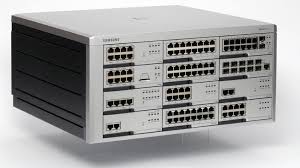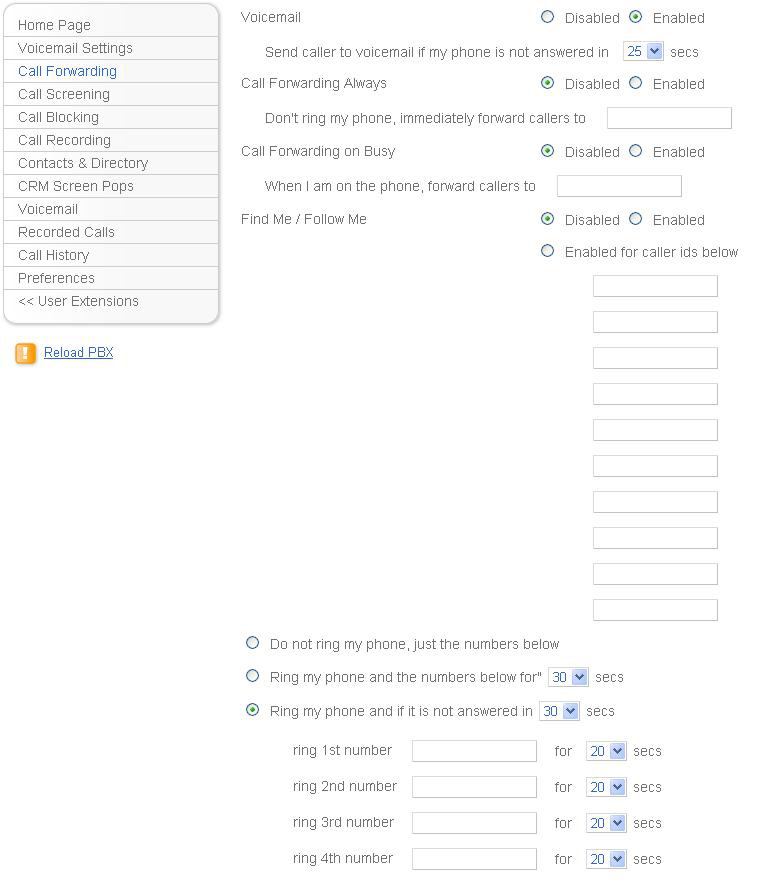This information on VoIP is going to make your decision easier when you need to make the switch and it better be quick. Read on so you can save money and cut the umbilical phone cord.
Help Me Understand VoIP
Here’s a weird one to ponder your thoughts on. In 1984 AT&T was so big that the U.S. government split the monopoly up into seven independent Regional Holding Companies, or RBOCs. These seven companies were known as the Baby Bells of which Southwestern Bell was one of them. Fast forward to 2005 when Southwestern Bell buys bankrupt AT&T. Southwestern bell abandoned its name and is now known at AT&T. Boy have things been changing since 1984.

Today there are still companies that use old digital phone technology from manufactures like Samsung, AT&T, Nortel and NEC. Samsung used to make the Samsung Officeserv, DCS and iDCS business phone systems but they too have removed themselves from the business telephone market. Similar to AT&T, Nortel and NEC dsx. Samsung was never really good at making a quality product as they mostly relied on the deep pockets of marketing. They tend to buy their way into markets segments like the cellular phone business. Samsung was not in the top five list of cellular phone manufacturing in the 90’s but quickly out gained the leader at the time, Nokia. Money sure does get one far… By the way, if you’re currently using a Samsung and can’t get support, here’s a link on how to change the time on the system since it doesn’t automatically change like today’s VoIP system.
Today Dial Tone is now the same as your data for your computer. A bunch of 0’s and 1’s (zero’s and one’s). The data is in a SIP format. You may hear terms like SIP trunking or VoIP Dial Tone. It’s very simple really. So since you are paying for internet services in your office for computers, it’s best to use that same internet and save money by doing away with the old digital and/or analog phone lines. Review your phone bills to see how much you’ll save now.
The year 2020 is a significant year for a lot of business’s. Apple is bringing in more manufacturing to the United States and away from China while Ford Motor Corporation will be competing with Tesla in the Electric Car arena. For Telecom such a cellular phones and VoIP phones, the dominant operating systems are macOS, Android and Linux (Similar to UNIX). Microsoft and Apples OS is not a player in the VoIP business telephone market as a stable operating system is required such as Linux.

The VoIP Phone whether being used in a Hosted Cloud or premise based are all gaining features such as built in Wi-Fi and Bluetooth. Here’s one of my favorite VoIP Phone from Yealink. This beauty offers touch screens like your smart phone and has both Wi-Fi and Bluetooth built in for only a few hundred bucks. This is unheard of when compared to the less popular Cisco 8865 that retails for $855 and not only looks cheap but feels cheap. The benefits of the built in Wi-Fi is this phone doesn’t require a data cable in the wall. The users can avoid the high cost of running a data cable by simply using the optional power supply while signing onto the local network. The benefits are not only saving money but gaining the ability to work anywhere in the world where WiFi and electricity is available.
Most companies that still use their Digital Phone Systems feel they are saving money because the system is already paid for. There are no more monthly lease payments and/or no more loan payments. However, what is often overlooked is the high cost of dial tone to run the digital phone systems. Think of having an old car that is paid off but gets terrible gas mileage compared to new cars or even a new technology car like electric vehicles. You can spend a lot of money each month for gas that can possible be greater than the payment, insurance and fuel consumption of a new vehicle. Furthermore, the benefits from a new car such as safety, features like back up camera’s and a sound system that integrates with your smart phone are all advantages. The results are saving money while benefiting from technology changes.
The same theory holds true with VoIP services no matter if you select Host, Cloud or premise based equipment. For cost justification purposes, review your current phone and internet bills. Changes are (Like +90 percent) that you may be paying more than you should for dial tone to run your Digital phone system. When you move to VoIP telephones, your greater than 90 percent certain you will save money while gaining all the benefits of the technology. Be sure to share your current cost with your prospective vendor to be certain. If not, keep searching because not all vendors offer the same platform. Similar to different model of cars, your savings will differ. You can choose from a Lamborghini style to a Toyota Camry. That’s a big difference.
The concerns of choppiness of phone quality have pretty much been addressed when you use a company that has experience. It’s not difficult at all. What you want to stay far away from is a response from your potential vendor telling you that all you need to do is increase your bandwidth when/if you experience choppy call quality. That’s like going to your Dr. for a foot issue and they tell you they have to chop off your leg versus prescribing an antibiotic. There are effective solutions without spending more money to remedy choppy VoIP voice quality that only an experienced company can provide. So be sure to ask the question, “What do you suggest we do if we have choppy call quality”? Remember saving money using VoIP Business Phones is your goal and spending more money on your internet bandwidth is anti productive and costly.
What about Proprietary phones and what does that mean?
Proprietary phones is a means at locking customers into a manufacturers products. I don’t like it and most companies have moved away from this because they have recognized consumers have caught on to this racket. Back to the car analogy. Let’s say you purchase a Ford Mustang and Ford tells you that they are the only one’s that can replace your tires. The cost is going to be five times what Walmart charges. Plug you can only take it to a Ford Dealer and wait in a long line on top of paying a high price. Oh, and you only discovered this AFTER you purchased the car five thousand miles later. Same holds true with Cisco (Cisco Unified Communications solutions) and Shortel (now Mitel). These two companies are perfect examples of how much money they can separate from the client. The solution is to move forward with a provider that can accept SIP Phones from Polycom, Yealink, Panasonic and even Granstream (Low end). You see, there is an incentive for the last phones mentioned because they are competing in the local marker and need to stay competitive to stay in business. You tend to see software updates more often that includes features and features on the phones like Touch Screen, Built in Wi-Fi and Bluetooth and incredible HD speaker quality. All for a fraction of what the proprietary guys charge.
How stable are VoIP platforms?
The short answer. Very. Most VoIP solutions are written on the Asterisk platform which has the building blocks to offer every type of feature available for VoIP Business Grade Solutions. Asterisk sits on the Linux Operating System. Linux is a “Version” of UNIX which was used to run the huge central office phone systems. There was a day that almost every home had a land line. The phones in all the homes would connect to the Central Office which was a giant computer running the Unix operating system. In short, Linux is considered the most stable operating system in the world next to Unix. We see VoIP phone services in Dallas collocations running for years without reboots or restarts that reflect zero errors.
Users can easily navigate around both the phone and the VoIP phone system that the phone is connected to via their User Portal. The User Portal gives the users the ability to;

- View their call history by time and date.
- Listen to their recorded Calls and Forward them if desired in WAV format
- Set Cellular Phone(s) to ring while their office desk phone rings. VERY COOL
- Manager Contact both internal and external and CLICK TO DIAL
- Change Message on Hold (By User)
- Configure Call Blocking
- Configure Call Screening
- Set up Conference Bridges
- Much More